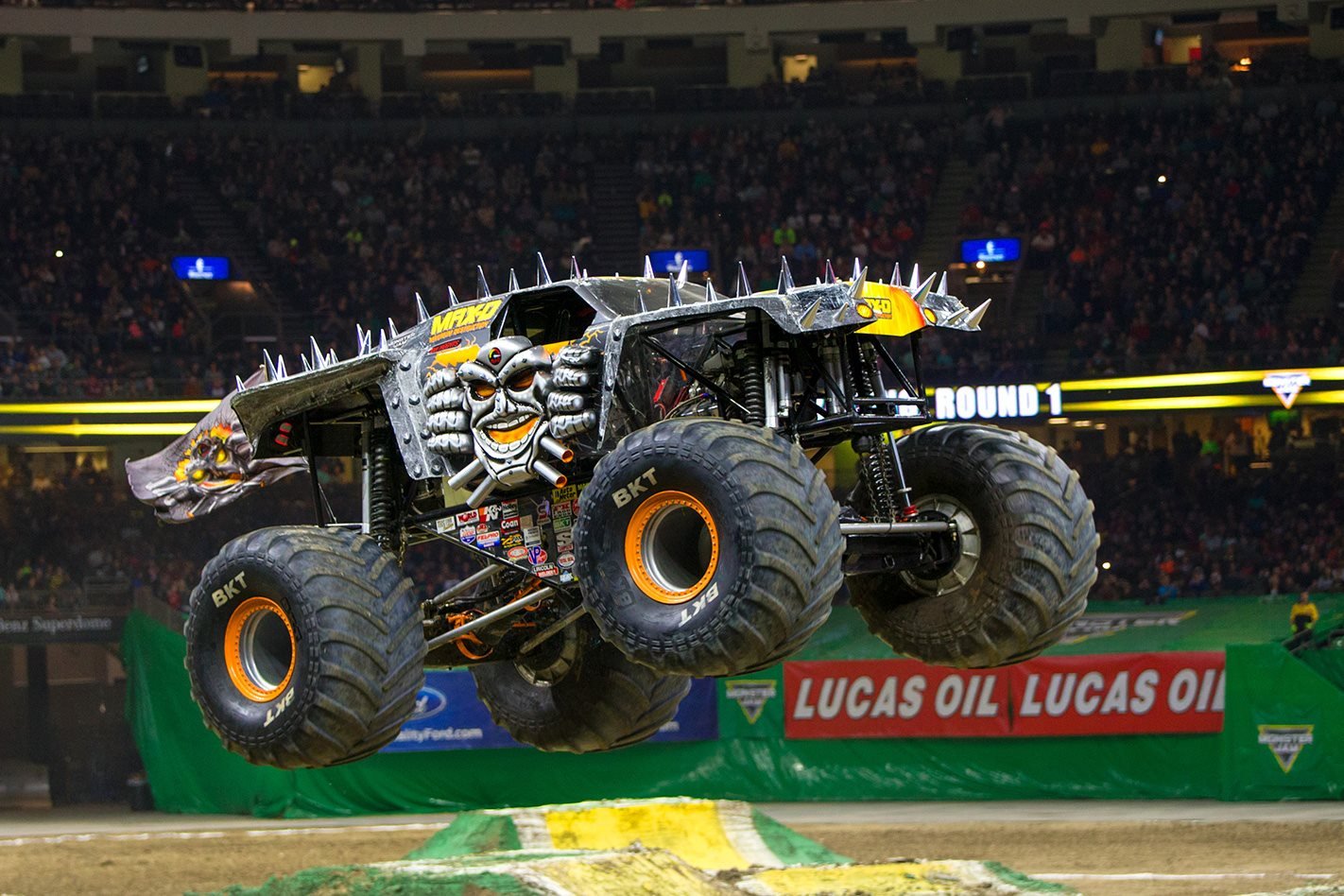PERCHED three and a half metres in the air, with 1118kW of screaming supercharged V8 under his foot, and strapped into the ominously named Maximum Destruction, Tom Meents is in his element – aimed directly at a shipping container.
The veteran Monster Truck driver is renowned for his ability to backflip the 4.5 tonne beast and, staggeringly, he does so not while looking out the windscreen, but by gazing through a polycarbonate firewall.
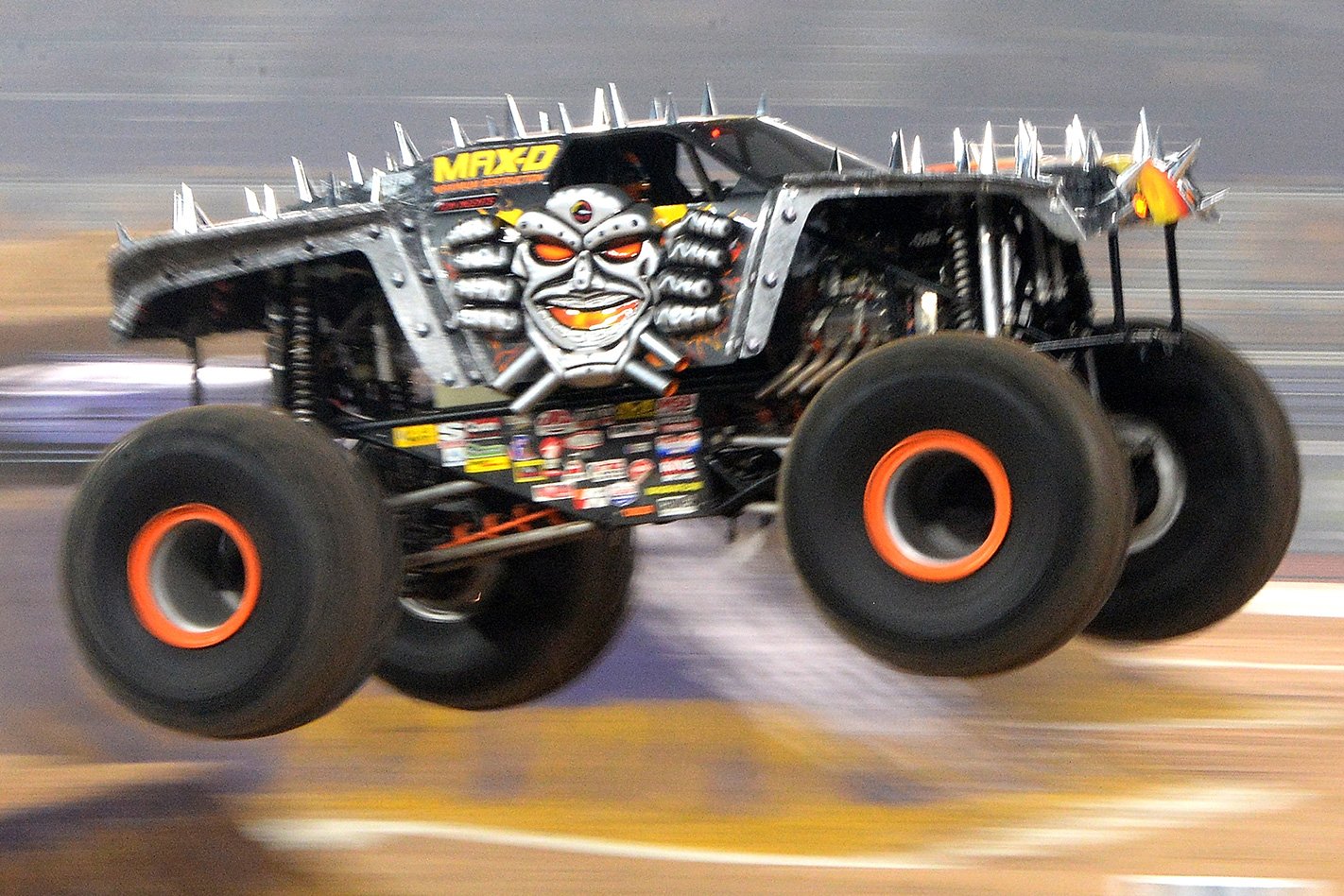
It’s just one of many monster truck quirks, which despite their outlandishly simple exterior (big body, big tyres), have a remarkable amount of engineering under the skin.
Maximum Destruction (often shortened to Max-D) is one of the most iconic monster trucks in the world, and Meents is the truck’s owner and driver, with the 51-year-old racking up 11 world championship titles (six in racing, five in freestyle). We chatted to Meents and his number one mechanic, Dan Evans, to better understand the anatomy of a Monster Truck.

Before we dive into the technical element, there are two basic monster truck disciplines to be aware of. The first is racing, which is similar to drag racing in that a pair of trucks face-off in a quick-fire elimination format, competing to be the first across the line on two parallel circuits.
The second is freestyle, where each rig is unleashed onto the floor of a stadium which is littered with obstacles for between 90 seconds and two minutes, the sole goal is to put on the most entertaining show possible with gravity defying jumps, and bus-crushing manoeuvres.
Most trucks stand at almost four-metres tall, and are draped in custom designed fibreglass bodies.
Underneath the skin lies a 540ci (8.8-litre) supercharged V8 heart, which guzzles alcohol at such a rate it’d put Charlie Sheen to shame. Trucks are designed with either a mid-front or mid-rear engine placement, depending on driver preference.
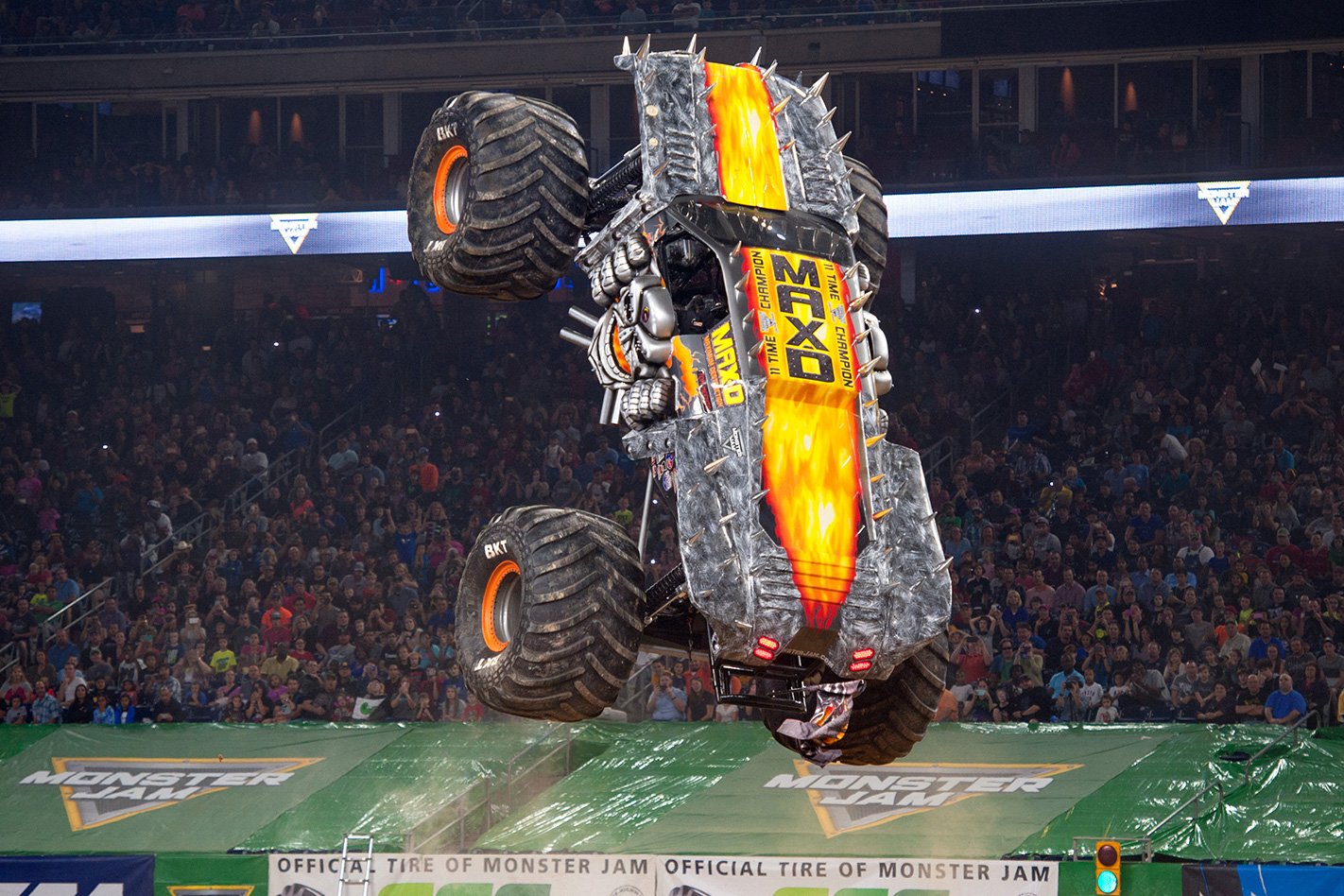
On a typical two minute freestyle run, with the driver feathering the throttle constantly between 6500-8500rpm without respite, the engine will empty a 40-litre tank of methanol.
With a similar design to a Top Fuel dragster, the V8 is fitted with an 8/71 supercharger, which allows up to 1118kW to be sent to the wheels.
“The thing we look for isn’t power,” Evans says. “We need these engines to live. Unlike a top fuel dragster that makes one pass down the track before a rebuild, we don’t do that. We will get 27 to 30 hours out of one of our engines.”
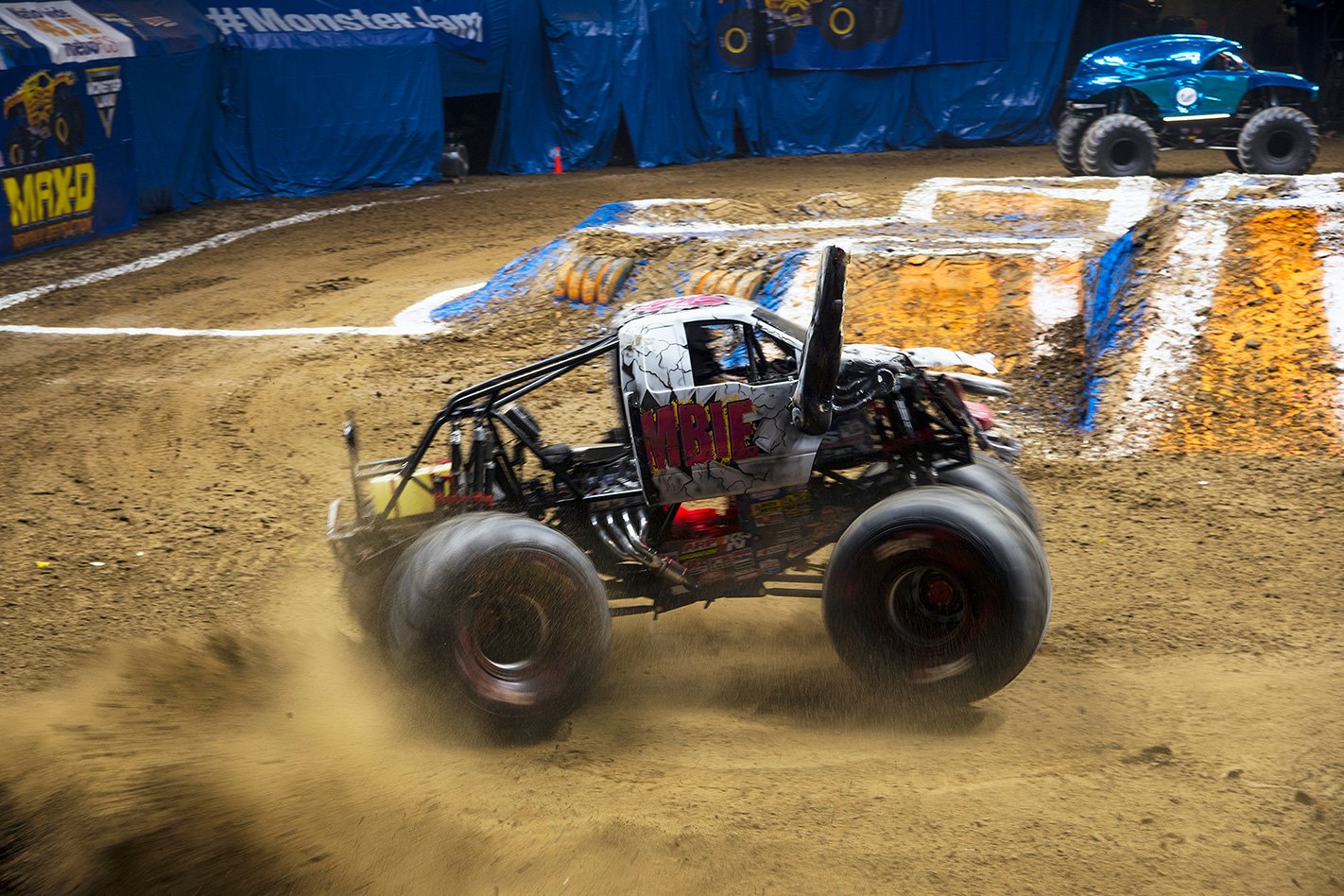
Despite the relatively long shelf life for such a hard working engine, Evans says the combination can be wrung out to Porsche 911 GT3 trouncing revs.
“I have run the engines up to 11,000rpm,” he states. “But the thing is, you really aren’t making much more horsepower after about 9000rpm.”
The latest trick du jour in Monster Jam is the backflip, in which trucks complete airborne full rotations. The 2017 freestyle champion landed the first ever monster truck front flip during competition, while Meents himself has been trying to perfect a double rotation.
Evans says there are a number of systems built into the engines to prevent them seizing when bouncing off the redline upside down.
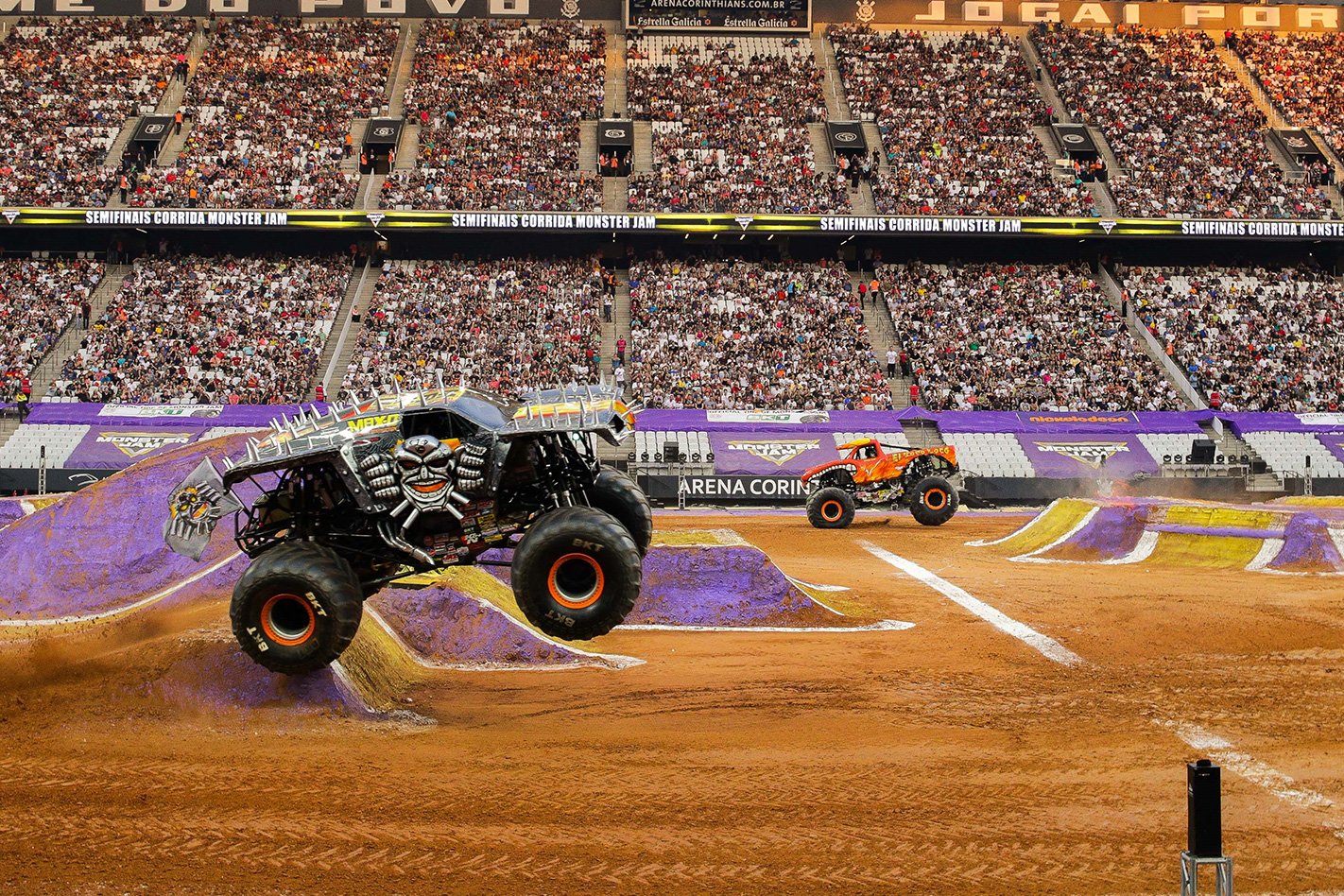
“The sub pump is custom designed,” he explains. “Instead of being at the front of the motor, it is at the back of the motor.
“Now we also have what we call an accumulator on there, which holds three quarts of oil [2.8-litres].
“As soon as the pump system starts to fail because it is upside down, you get three quarts of oil go through the accumulator which has about 80psi to it, and that can make the engine live for about 30 seconds. You are never going to be in a bad flip for more than 30 seconds”
The fuel system has also been uprated, with Max-D running a “110-gallon-per-minute direct injection” system according to Evans.
“It doesn’t really care [about being upside down], it’ll still pump the fuel to the engine,” he explains.
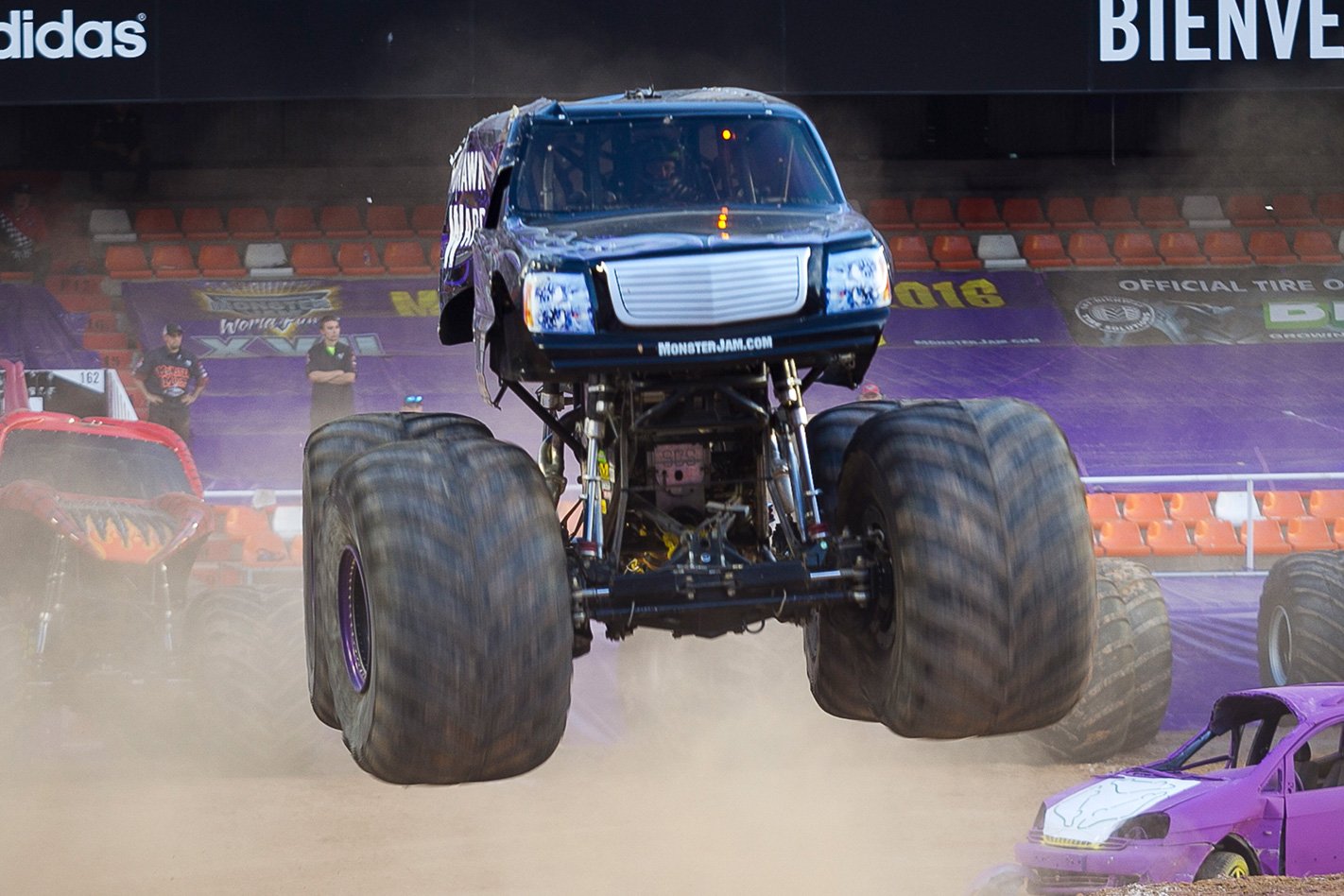
Monster Jam trucks are fitted with four-wheel-steering, with the driver able to operate the front and rear axles independently. As Meents explains, this can make things rather complicated inside the cramped cabins.
“There are so many things going on,” he says. “You have to steer the front wheels with your left hand, the rear wheels with your right hand, while working the throttle with your right foot, and brakes with your left, and then you’ve still got to shift gears. You’re out of appendages, and you have so many things to think about at the same time. They are very difficult to drive, and yet the most fun thing to drive at the same time too.”
Putting the engines’ power to the ground requires a sturdy transmission. Drivers are so busy behind the wheel of a Monster Jam truck that there is no point having a three-pedal manual, while intricate multiple-ratio automatics would be too fragile to survive the bus-crushing forces involved in a freestyle run.
Instead, each truck runs a two-speed automatic powerglide transmission, which can take the punishment, while remaining simple enough for drivers who are already multi-tasking like a brick laying octopus.
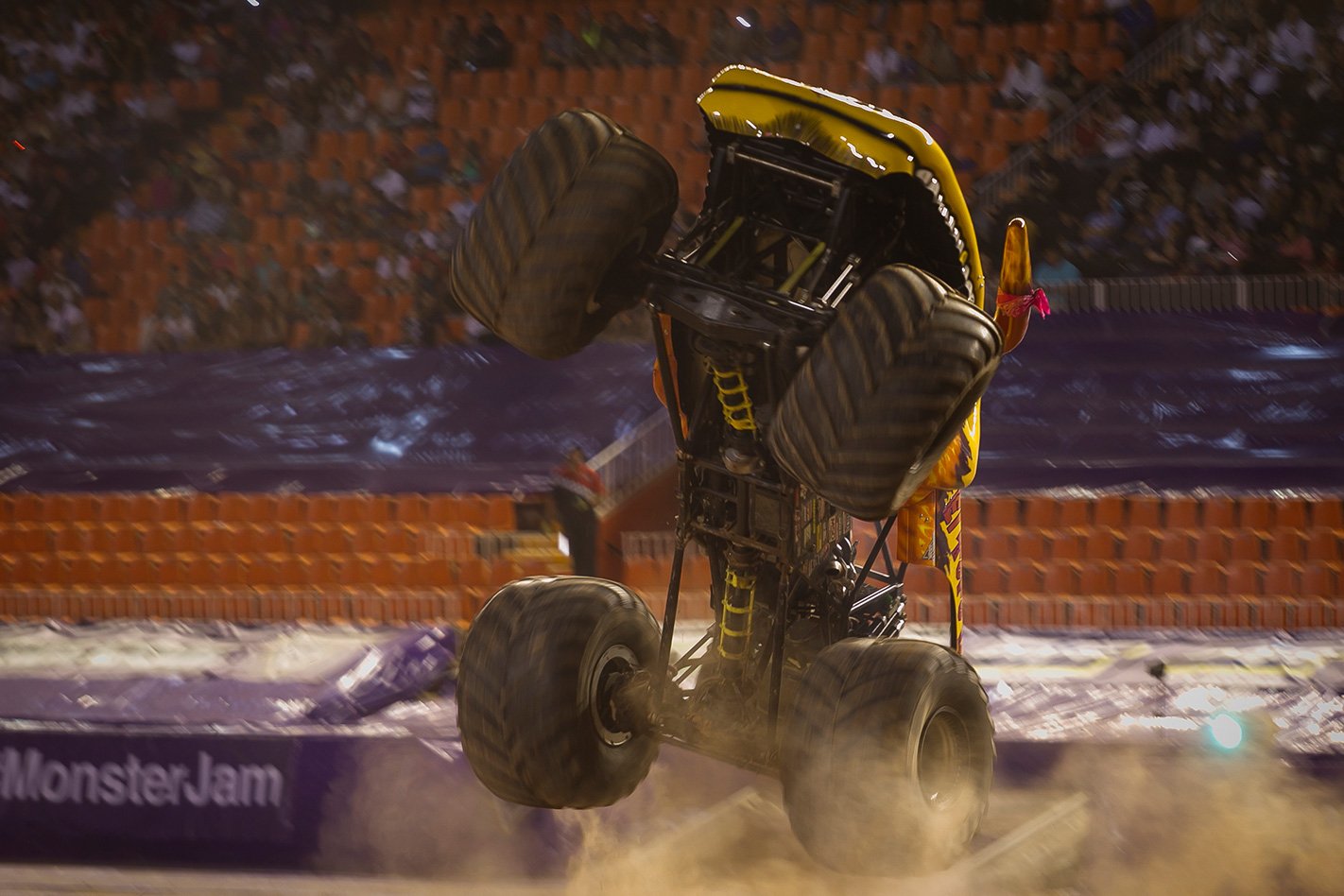
“The amount of time from when you go into first gear and then going to full throttle, you are pushing into second at the same time, you will hit the rev limiter immediately in first gear,” Evans explains.
“Our top speed on them is going to be about 120-130km/h, but it is instantaneous.”
The brutal turn of speed allows the trucks to hit obstacles with eye-watering force, catapulting into the air multiple stories high.
When Meents moved house in 2005 he famously dragged his old abode into the middle of a field, set up a dirt ramp, and then cleared the structure while at the wheel of Max-D, before promptly looping around, and driving the 4.5-tonne mechanical monster through the living room window.
While there aren’t any houses in a Monster Jam arena, there are plenty of large dirt ramps the height of shipping containers designed to launch the trucks into low orbit, and drivers will happily oblige. Many send themselves and their truck high enough to be at eye-level with punters in the nose-bleed section of some of America’s largest stadiums.
But it’s once gravity puts an end to the hijinks that things really start to get brutal, with drivers ending their leaps with full flat landings – there are no cushioning down-ramps here.
In order to stop the driver’s spine being turned into a fine mist, and the chassis pile-driving the earth, modern Monster Jam trucks are fitted with custom heavy-duty shock absorbers, with a pair per corner.
“Basically, we run 26-inch shocks on the front, and 30-inch on the rear,” Evans explains. “That’ll give you a drop-out travel of about 30-inches.”
The hydraulic-over-nitrogen system is able to be valved to the preferences of each driver, with an option of AW32, AW46, or AW64 fluids depending on ambient temperatures.
The tyres, which measure 167cm tall and 109cm wide, also play an important role in coping with the punishing landings. Custom-built for Monster Jam by BKT Tyres, the huge treads take 50 hours each to build, and Max-D will chew through about eight per year.
Evans explains that tyre pressures often depend on track conditions: “If it is a real sticky track, I want to get it boosted up so we crown the tyre a little bit, so I may run as high as 32psi. On a clay or sand track we will probably run around a 25 to 28psi.”
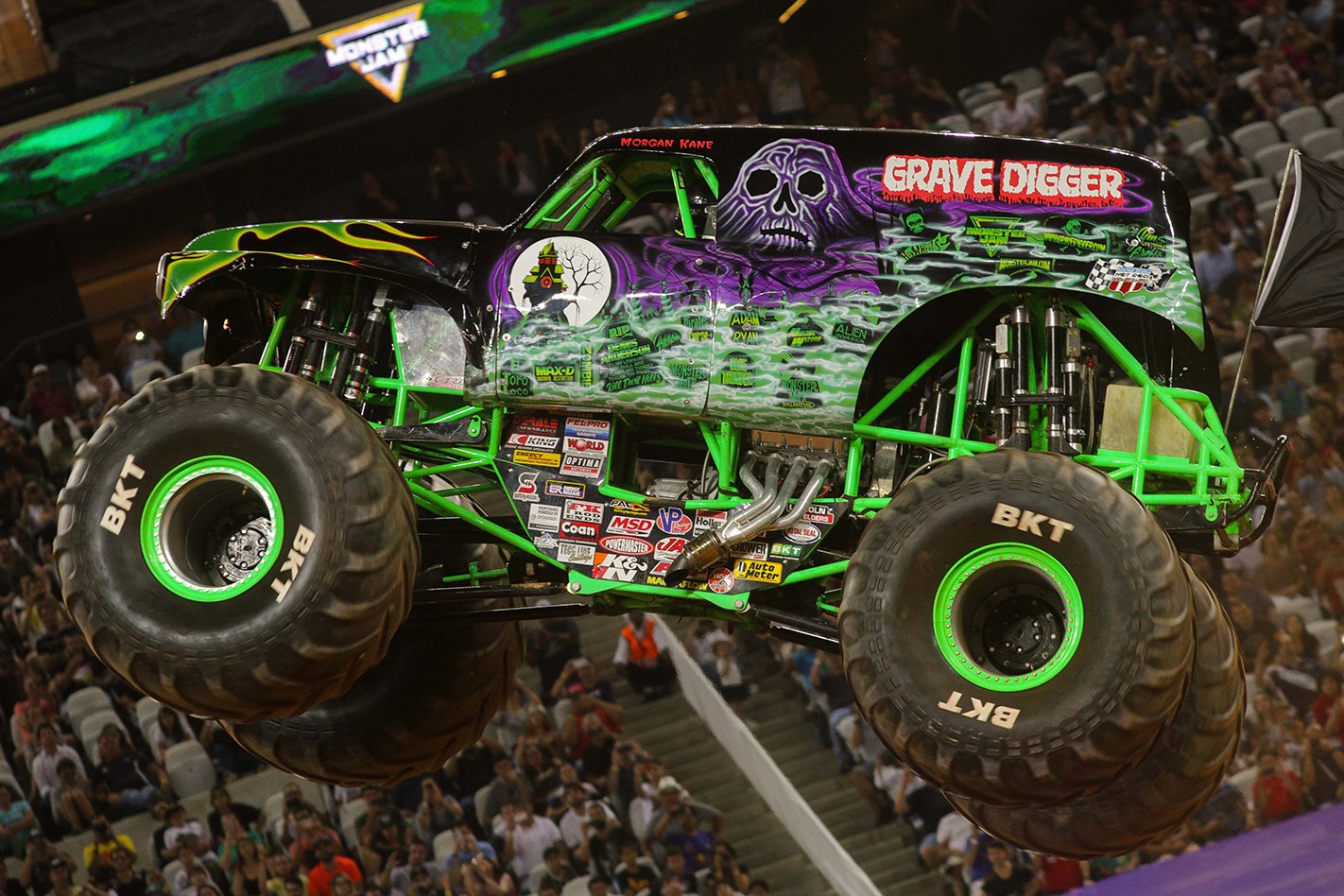
The entire chassis of a truck is custom-built from chrome moly tubing, which is a labour-intensive process. According to Meents, it takes “two to three guys a good three months to lay one out and get it how you want it.” Cost? Once everything is put together, you would be looking down the barrel of a A$350,000 invoice.
Despite the time and money, Meents isn’t shy about tearing up his equipment, with Max-D often shedding bodywork and wheels during the raucous freestyle performances.
When the team visits Australia later in the year for a multi-show tour with Monster Jam, they will send two shipping containers. The first with a truck and assorted pieces of equipment, and the second filled to the brim with spare parts, along with four complete fibreglass bodies.
The truck will be accompanied by a chief technician, and two mechanics, and the trio will be under the pump to perform repairs rapidly.
“An engine [swap] will usually take an hour and fifteen minutes, to an hour and a half,” Evans explains.
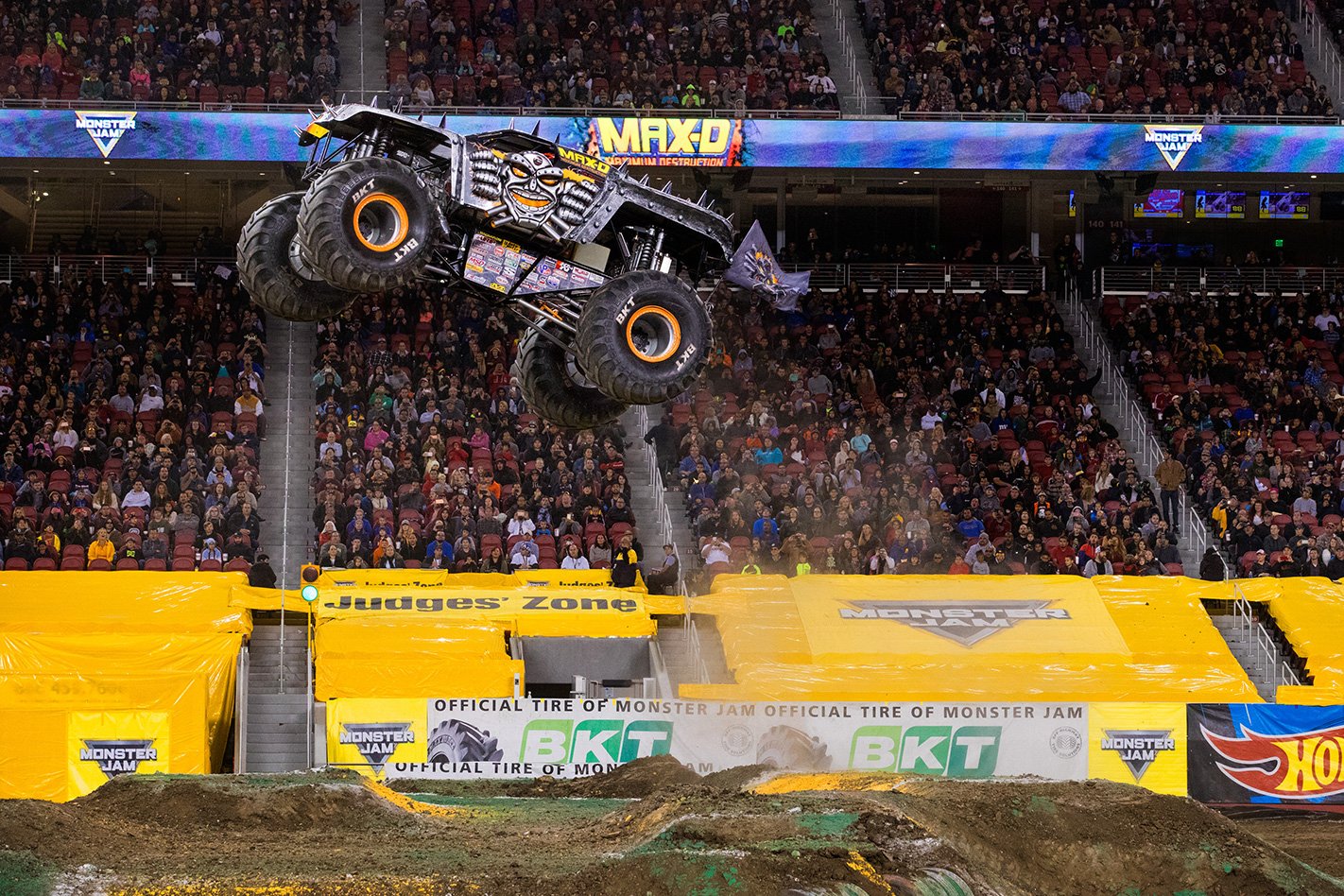
“So your two major components that break that would take the most time to repair would be an engine or breaking an axle housing in half. There is so much attached to a rear-end housing between all the safety equipment and running gear that it is time consuming to repair. Transmissions take 10-12 minutes, maybe 15 on a bad day.”
Evans has witnessed the engineering on Monster Jam trucks advance over the past two decades he has been involved in the sport.
“The biggest change, design-wise, is the shocks, and the hardening of the parts,” he explains. “We are actually making all of our own hub assemblies now. We are making our own housings. Pretty much everything is custom made.
“If you go back several years, we were taking planetaries and rear ends out of military heavy equipment and customising them to fit, and then finding out that wouldn’t hold up.
“Through the evolution of the sport, now we are building our own billet parts, we are finding our failure rate is nil compared to what it used to be.”
Safety has also been a major focus for Monster Jam, both for the drivers and the spectators.

“It seems like every couple of months we are adding another safety feature,” Evans explains.
“I would say keeping the drivetrain with the truck is one of our main concerns. The tether system on the wheels, so the tyres don’t go bouncing across the floor if it breaks, is another significant advancement.
“If a driveshaft breaks we have safety loops and safety blankets. Rotator cuffs covering every u-joint. Tethers on all the sway bars, all the shocks are tethered and clamped together. Everything is designed now to stay with the truck, we don’t want anything leaving the truck.”
If you want to see these physics-defying engineering marvels at work, Monster Jam is touring Adelaide, Sydney and Melbourne in October, where Meents and co will be up to their usual truck-destroying antics.


